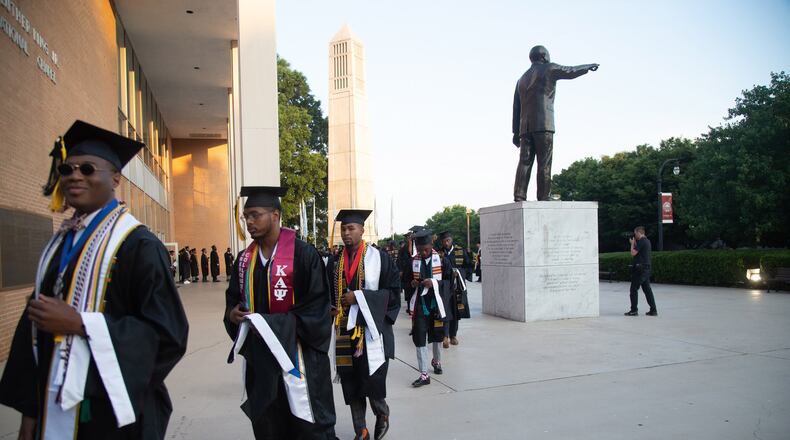Billionaire technology investor Robert F. Smith’s surprise announcement at this year’s Morehouse College commencement ceremony that he will pay the student loan debt for each graduate has more people talking about a long-standing issue in higher education.
Student loan debt — $1.5 trillion and counting — is out of control.
So what’s the solution?
Some Democratic presidential candidates, Vermont U.S. Sen. Bernie Sanders being the latest last week, have offered ideas. So, too, has the White House.
Several ideas focus on eliminating debt after the borrower makes a certain amount of payments. However, few experts believe any significant changes will be made before Election Day 2020.
Even if a Democrat wins the White House next year and the party gains control of the U.S. Senate, the plans may have difficulty passing because of questions within the party about how to pay for the initiatives.
“There’s not broad-based support among the Democratic Party to support these proposals,” said Donald E. Heller, who teaches education policy at the University of San Francisco and is the school’s provost and vice president of academic affairs.
Here’s a breakdown of some specific plans, including those from the Trump administration:
President Donald Trump: Under provisions in his proposed 2020 budget, undergraduate students would have their loans forgiven after 15 years of monthly payments, and graduate students would have their loans forgiven after 30 years of monthly payments.
Sanders: He wants to cancel the outstanding debt for all borrowers, cap student loan interest rates at 1.88%, provide Pell grants to cover the remaining tuition, housing and fees for all students currently eligible to receive the grants and triple work-study funding. He wants to pay for it with a 0.5 percent tax on stock trades, a 0.1 percent fee on bond trades, and a 0.005 percent fee on derivative trades.
Pete Buttigieg: the mayor of South Bend, Ind. owes about $131,296 in student loans, campaign officials said this month. He said during Thursday’s debate he believes graduates should be able to refinance their debt.
Julian Castro: The former mayor of San Antonio has proposed that students would not pay loans until they earn at least 250% of the federal poverty line, which is about $26,000 for a family of four. The loan repayment would be capped at 10% once the borrower meets that income threshold. Castro also proposes expanding maximum Pell grants from the current $6,195 a year to $10,000. He would pay for this with a new, unspecified tax plan.
Kirsten Gillibrand: The U.S. senator from New York was one of the lead sponsors of a bill introduced in April that would make all federal students loans eligible for participation in a federal program that forgives the debt after 10 years of on-time payments.
Elizabeth Warren: The U.S. senator from Massachusetts wants to cancel about all current student loan debt and pay for it with a 2% annual tax on the 75,000 families with $50 million or more in wealth.
Heller, the University of San Francisco educator, believes raising the maximum Pell grant to $10,000 is one approach that could help students from lower-income families who typically struggle more with paying for college. A bill introduced in the U.S. Senate last year proposed raising the maximum Pell grant but it failed.
Change takes time in Washington. Another bill aimed at reducing student loan debt was introduced last year with 32 House sponsors. This year, it had 40 sponsors.
Only 180 votes to go.
About the Author
Keep Reading
The Latest
Featured


